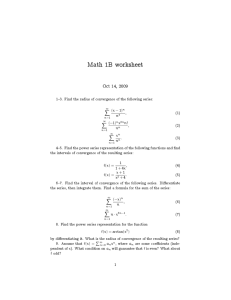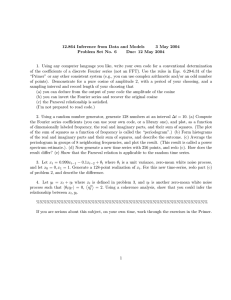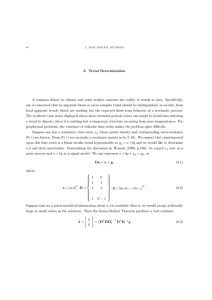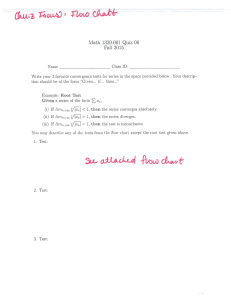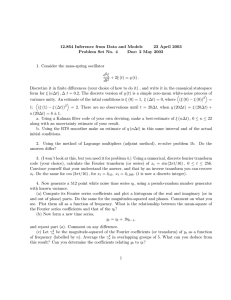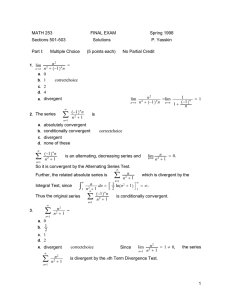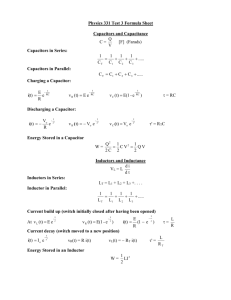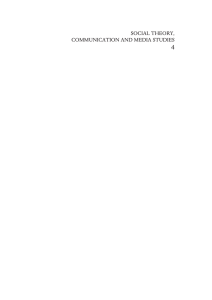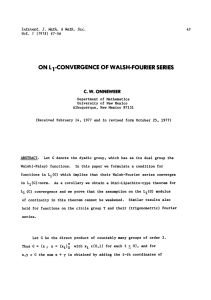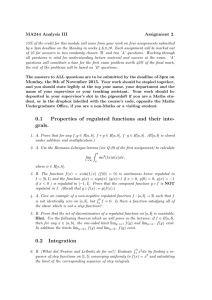MATH 152, Fall 2013 Week In Review Week 11
advertisement
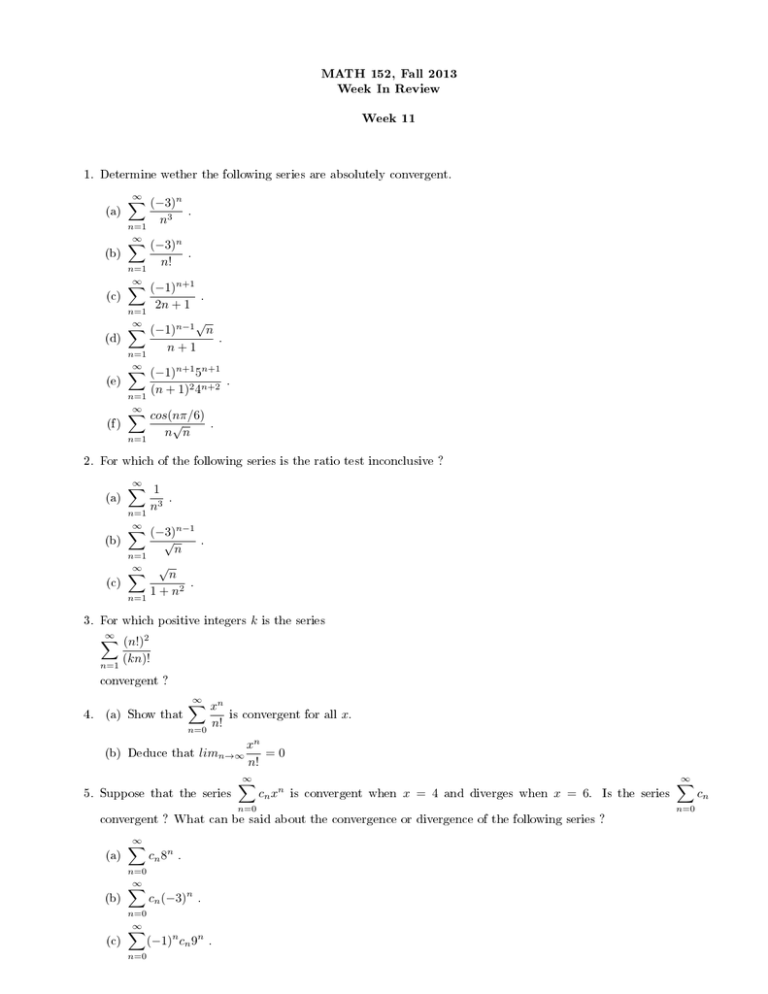
MATH 152, Fall 2013 Week In Review Week 11 1. Determine wether the following series are absolutely convergent. (a) ∞ X (−3)n . n3 n=1 (b) ∞ X (−3)n . n! n=1 ∞ X (−1)n+1 . 2n + 1 n=1 √ ∞ X (−1)n−1 n (d) . n+1 n=1 (c) (e) ∞ X (−1)n+1 5n+1 . (n + 1)2 4n+2 n=1 (f) ∞ X cos(nπ/6) √ . n n n=1 2. For which of the following series is the ratio test inconclusive ? ∞ X 1 (a) . 3 n n=1 ∞ X (−3)n−1 √ . n n=1 √ ∞ X n (c) . 1 + n2 n=1 (b) 3. For which positive integers k is the series ∞ X (n!)2 (kn)! n=1 convergent ? 4. (a) Show that ∞ X xn is convergent for all x. n! n=0 (b) Deduce that limn→∞ 5. Suppose that the series xn =0 n! ∞ X n=0 cn xn is convergent when x = 4 and diverges when x = 6. Is the series convergent ? What can be said about the convergence or divergence of the following series ? (a) (b) (c) ∞ X cn 8n . n=0 ∞ X n=0 ∞ X cn (−3)n . (−1)n cn 9n . n=0 ∞ X n=0 cn 6. If ∞ X cn 4n is convergent , does it follow that the following series are convergent? n=0 ∞ X (a) (b) (c) cn (−2)n . n=0 ∞ X n=0 ∞ X cn (3)n . cn (−4)n . n=0 7. Find the radius and interval of convergence of the seriws . (a) ∞ X xn . n2 n=1 (b) ∞ X (−1)n xn . n2n n=1 (c) ∞ X n (2x − 1)n . n 4 n=0 ∞ X (d) (e) (−1)n n=1 ∞ X (x − 1)n √ . n (x − 4)n . n5n n=1 (f) ∞ X 2n (x − 3)n . n+3 n=0 (g) ∞ X (x + 1)n . n(n + 1) n=1 ∞ X (h) (i) n!(2x − 1)n . n=1 ∞ X nxn . 1 · 3 · 5 · · · · · (2n − 1) n=1 8. If k is a positive integer, nd the radius of convergence of the series ∞ X (n!)k n x (nk)! n=0 . 9. A function f is dened by: f (x) = 1 + 2x + x2 + 2x3 + x4 + 2x5 + x6 + · · · That is, its coecients are c2n = 1 and c2n+1 = 2 for all n ≥ 0. Find the interval of convergence of the series and nd an explicit formula for f (x) . 10. If f (x) = f (x). ∞ X n=0 cn xn where cn+4 = cn for all n ≥ 0, nd the interval of convergence of the series and a formula for 11. Find a power series representation for the following functions, and determine the interval of convergence. 1 . 1 + 4x2 1 (b) f (x) = 4 . x + 16 1 + x2 . (c) f (x) = 1 − x2 1 (d) f (x) = . (1 + x)3 (a) f (x) = (e) f (x) = xln(1 + x) . (f) f (x) = x2 . (1 − 2x)2 12. Evaluate the indenite integral as a power series Z x dx . 1 + x5 Z tan−1 (x) (b) dx . x Z (c) tan−1 (x2 )dx . (a) 13. Use a power series to approximate the denite integral to six decimal places. (a) Z 1/2 tan−1 (x2 )dx . 0 (b) Z (c) Z 0.5 0 1/3 1 dx . 1 + x6 x2 tan−1 (x4 )dx . 0 14. Dened the function f by the power series f (x) = ∞ X xn . n! n=0 (a) Show that f is solution of the dierential equation f 00 (x) + f (x) = 0 f or . (b) Prove that f (x) = ex . all x
